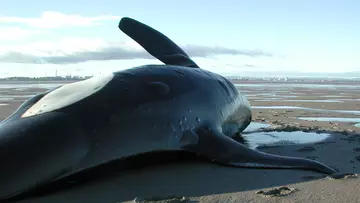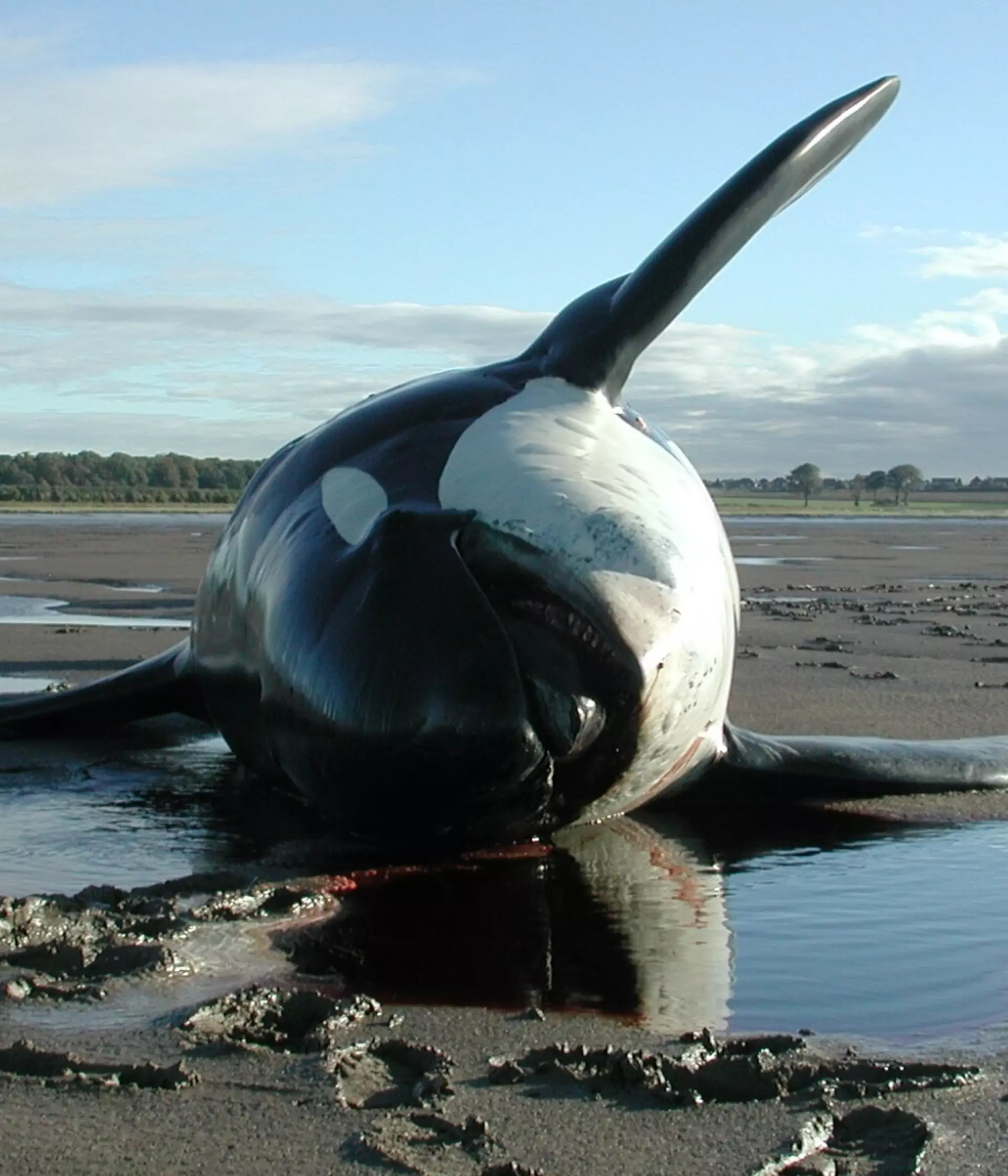
Mr. Rob Deaville
CSIP Project Manager
In 2001, a killer whale was found stranded in the River Mersey. Rob Deaville of the UK Cetacean Strandings Investigation Programme (CSIP) looks at the issue of killer whale strandings on the UK coast, and how research has identified why they may be facing extinction in European waters.
I manage the UK Cetacean Strandings Investigation Programme (CSIP), a collaborative Defra funded research programme that investigates stranded cetaceans (whales, dolphins and porpoises) at post-mortem, to try to learn more about the threats they face in UK waters.
A killer whale stranding in Liverpool
On 9 October 2001, my colleagues and I received a call that would lead to an interesting few days out for the strandings project. A killer whale (Orcinus orca) had been reported dead stranded on a sandbank in the River Mersey, so we immediately got our kit together and set off from ZSL towards Liverpool.
On the way to Liverpool, the situation became more complicated. The whale had stranded on a sandbank that could only be accessed at low tide and the location and deep mud made it next to impossible to get to by boat. In addition, it had stranded opposite John Lennon airport and we had to gain permission to examine the body, because of the possibility that birds might feed on the opened carcass and the concern that this could then pose an increased bird strike issue to planes taking off or landing. It took most of the day to iron out these problems, so we weren’t able to access the body until the day after our arrival in Liverpool.
So early the next morning, we found ourselves hiring a helicopter from a bemused representative of a charter company, to fly our team out to the sandbank and drop us off whilst we carried out the post-mortem examination. In this time, we’d also been joined by CSIP colleagues from Marine Environmental Monitoring in Wales and the Natural History Museum, so we had a pretty big team at the stranding location.

The challenges of examining a stranding
Although it was a clear and crisp day, conditions were very difficult out there. The deep mud on the exposed expanse made it hard to stand still for long in one spot, without the risk of sinking into the mud and having to help extricate each other. Over the course of the next two hours, we all worked quickly, to ensure that as complete an examination as possible could be carried out, before the tide started coming back in and the helicopter returned to take us back to the shore.
We found that the whale was a 5.9m long adult male that appeared to be thin and had no evidence of recent feeding. Some of the pathological findings, together with the location of the body well within the Mersey, indicted that it had probably stranded alive and this was likely to be the proximal or immediate cause of death.
The teeth were markedly worn and one tooth was loose with a large associated abscess in the surrounding tissue. The worn teeth suggested that the whale might have been an aged individual. The cause of death was therefore judged to be due to the live stranding and was probably linked to the poor nutritional condition (starvation) and possibly also to the presumed relative age of the animal.
Why was this killer whale stranding so important to examine?
So why is this important beyond the gung ho description of helicopter rides and trying not to get stuck on sandbanks and why did we go to such lengths to examine the body? Although there have been several other strandings of killer whales in Scotland since 2001, this was the last time that a dead killer whale stranded in England or Wales.
Today, a paper has been published in the journal Scientific Reports, describing one of the world's largest datasets of marine contaminants in cetaceans. It details data on levels of PCBs (polychlorinated biphenyls) in the blubber of more than 1000 stranded or biopsied cetaceans.
We found that the blubber of killer whales, bottlenose dolphins (Tursiops truncatus) and striped dolphins (Stenella coeruleoalba) in Europe contain some of the highest concentrations of PCBs ever recorded. Some populations of killer whales in European waters may therefore be facing extinction as a result of the impact from these lingering toxic chemicals, which have been banned since the 1980s.
Post mortem examinations like the one described above are largely responsible for such research, which has global significance for the killer whale. Although these are sobering findings, it’s vitally important that we continue to learn as much as we can about this issue, to help inform future policy decisions and hopefully help improve the long term conservation status of these iconic marine predators.
Climate change and human activity have pushed our precious planet to its limit, causing the devastating loss of so many habitats and species. From lab to field, hands on and behind the scenes, we’re leading the future of conservation, shaping agendas and influencing change to support better life, health and living for people and wildlife.
